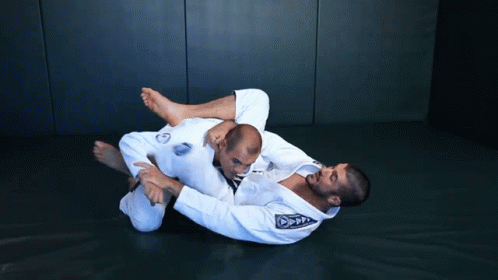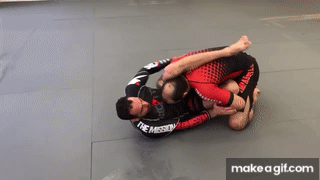The Triangle Choke: Constricting Your Way to Victory in BJJ
The triangle choke is a quintessential submission in Brazilian Jiu-Jitsu (BJJ) that demonstrates the art’s core principle: technique conquers strength. This article delves into the choke’s history, its variations, and its application in different grappling scenarios. Whether you’re a seasoned practitioner or a curious newbie, understanding the triangle choke will add a lethal weapon to your BJJ arsenal.
History of the Triangle Choke
- Origins: The triangle choke, known as “Sankaku-Jime” in Judo, was integrated into BJJ as the art evolved in Brazil. Its roots can be traced back to traditional Jiu-Jitsu in Japan, where it was used as a submission technique on the battlefield.
- Evolution in BJJ: The choke gained prominence through the Gracie family, who showcased its effectiveness in the no-holds-barred fights of the early UFC events.
- Modern Usage: Today, the triangle choke is a staple in competition, with practitioners constantly refining and creating new entries and variations.

Types of Triangle Chokes
Classic Triangle Choke
- Description: Performed by encircling the opponent’s neck and one arm with your legs, forming a figure-four with your thighs.
- Key Points:
- Control the opponent’s posture.
- Secure the arm and angle off to the side.
- Squeeze your knees together and pull down on the head.

Reverse Triangle Choke
- Description: A variation where the choke is applied with the legs reversed, targeting the carotid arteries from a different angle.
- Application: Often used when the opponent turns their back or in transition from other submissions.

Side Triangle Choke
- Description: Applied from the side control position, trapping the arm and neck without the need for a guard.
- Application: Effective in both Gi and No-Gi scenarios, especially when the opponent is defending arm submissions.
Application in Gi and No-Gi
- Gi BJJ: The presence of the Gi allows for additional control points, such as collar and sleeve grips, which can set up or strengthen the triangle choke.
- Use the Gi lapels to control posture.
- Collar grips can help break the opponent’s posture down
- Sleeve and pant grips can prevent the opponent from escaping.
- No-Gi BJJ: Without the grips provided by the Gi, practitioners must rely on underhooks, overhooks, and body locks to secure the triangle choke.
- Focus on clinching techniques for control.
- Use overhooks and head control to compensate for the lack of grips.
- Be prepared to switch to alternative submissions if the opponent begins to escape.
Setting Up the Triangle Choke: A Step-by-Step Guide
The triangle choke is a hallmark of BJJ’s submission arsenal, renowned for its versatility and effectiveness. Here’s a detailed breakdown of how to set up this formidable choke from the closed guard position, which is its most common launching point.
Step 1: Establish Wrist Control
Gaining control over your opponent’s wrists is crucial. In the closed guard, this serves multiple purposes:
- It prevents your opponent from establishing grips, which are essential for guard passing.
- In MMA or self-defense, it hinders your opponent from striking effectively.
- It sets up the positioning for the triangle choke.
Step 2: One Arm In, One Arm Out
The essence of the triangle choke lies in isolating one of your opponent’s arms while the other is pushed across to the opposite side of their body. This positioning is vital because the choke relies on using your legs to apply pressure to your opponent’s neck and one shoulder.

Step 3: Thrust Hips Upward and Lock the Triangle
With one arm in and one arm out, momentarily open your guard and explosively thrust your hips upward. This movement serves to catch your opponent off-guard and reduce the space between your hips and their neck. At the peak of this movement, position one leg over the shoulder of the arm that’s in and the other leg underneath the opposite shoulder.
Step 4: Control Your Opponent’s Head
Controlling your opponent’s posture is key in closed guard submissions. Use your legs and hands to pull down on your opponent’s head, which is essential to prevent them from regaining posture and potentially escaping the choke.

Step 5: Achieve a 90-Degree Angle
To effectively apply the choke, you need to create an angle perpendicular to your opponent. This can be done by pushing off their hip with your foot to pivot your body. While doing this, maintain control of your opponent’s posture by holding your shin behind their neck.
Step 6: Complete the Submission
Finally, to complete the triangle choke:
- Ensure the trapped arm is across your opponent’s body to prevent escape and maximize the choke’s effectiveness.
- Squeeze your legs together and pull down on your opponent’s head to apply pressure on the neck, compelling them to tap out.
Remember, practice is key to perfecting the triangle choke. Regular drilling and live sparring will help you recognize and exploit opportunities to apply this submission in real scenarios.
Defenses and Counters
- Posture Up: The primary defense against a triangle is to maintain strong posture, making it difficult for the attacker to break you down.
- Stacking: By stacking the attacker, you can create pressure and make it uncomfortable for them to maintain the choke.
- Escape Techniques: There are several escape techniques, including the ‘slam’, ‘stack and pop’, and ‘leg pry’, which require timing and practice.
Training Tips
- Drill Regularly: Repetition is key to mastering the triangle choke.
- Strength and Flexibility: Core strength and hip flexibility can greatly improve your triangle choke.
- Live Practice: Regular sparring will help you recognize opportunities to apply the triangle in a live setting.
Conclusion
The triangle choke is a versatile and powerful submission in BJJ that reflects the art’s strategic depth. By understanding its history, variations, and applications, you can incorporate this choke into your game at all levels. Remember, the triangle choke isn’t just a move; it’s a journey of learning and refinement.
- Buggy Choke: The Complete Guide - March 6, 2024
- Jiu Jitsu World League: Your Complete Guide - March 5, 2024
- How much do UFC referees make? A comprehensive guide - March 5, 2024



